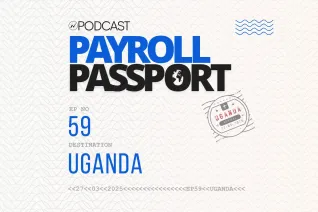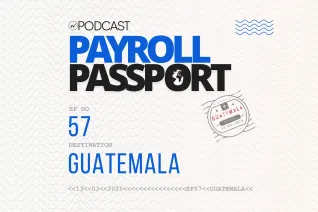What is a Record of Employment (ROE)?

A record of employment (ROE) is a form that provides information on employment history that is widely used in Canada.
According to Service Canada, employees use the most important document to apply for Employee Insurance (EI) benefits. It is filed with the government in case of interruption of earnings of employees receiving insurable earnings.
What is “interruption of earnings”?
An ROE form is filed when there is an interruption in an employee’s earnings. But what accounts for an interruption?
According to Service Canada, the following two are considered “interruption of earnings”:
Seven-day rule: An ROE can be filed when an employee goes seven consecutive calendar days without insurable work or earnings. This rule applies when an employee resigns, is laid off, or is terminated.
However, there are exceptions to this rule. It doesn’t apply to real estate agents (unless their licenses are revoked or suspended), commissioned salespeople (unless their contract is terminated), or employees with non-standard work schedules, such as firefighters or miners.
Fall in salary: An interruption in earnings can also occur when there is a fall in an employee’s salary to below 60% of regular weekly earnings. This may be because of sickness, injury, pregnancy, parental leave, or other personal reasons.
ALSO READ | How long do companies keep employee records?
What are insurable earnings or work hours on ROE?
Companies must submit ROEs only for employees with insurable earnings and hours. But what do insurable earnings or work hours mean?
According to the Employee Insurance system, each hour worked for which remuneration is received is considered insurable.
Insurable earnings refer to the compensation employees receive on which employee insurance premiums are paid. All earnings received in cash are considered to be insurable.
When should an ROE be filed?
An ROE form is usually filed when an employee intends to claim EI benefits. However, ROE can also be filed whenever an employee experiences an interruption of earnings.
According to Access to Information Act and Privacy Act, Service Canada retains an ROE form for up to 11 years.
How to file an ROE?
Record of employment forms can be filed in two ways:
Electronic ROE: ROE web can be used to process documents online. This method allows up to 1200 ROE forms to be filed at once. It saves time and allows employer to define their pay cycle.
Employers require an ROE web account, which a primary officer will account for on behalf of the business.
ROE web also offers Secure Automated Transfer (SAT) for payroll service providers to file ROE forms with Service Canada.
Paper ROE: Employers can also contact Canada Revenue Agency’s Employer Contact Center to request paper ROE forms.
What does record of employment include?
A record of employment contains essential employee information regarding their insurable work hours and earnings. This information is used to determine if the employee qualifies for employment insurance.
An ROE consists of basic employee information like their name and address. It also contains other information related to the interruption of their earnings, such as the employee’s first day of work, the last day they were paid for, and their total insurable hours and earnings.
It also consists of the employee’s social insurance number and their company’s Canada Revenue Agency Business Number, a 9-digit number assigned by the Canada Revenue Agency to businesses and organizations for tax-related purposes.
How to access record of employment?
There are three copies of paper ROE: The first copy that is handed over to the employee, the second copy that is submitted to Service Canada, and the third copy that the employer must retain for up to 6 years.
What happens when an ROE is not filed?
Failing to provide a timely ROE can result in liabilities such as “inconvenience damages” and other employer fines. It also causes delays for employees in receiving employment insurance benefits.
For payroll service providers, it is essential to keep track of ROE forms, as it is required for Employee Insurance benefits. These benefits must be included as inputs in the payroll process.
Data validation and compliance are important aspects of payroll processing that should not be compromised. Therefore, companies can seamlessly rely on Neeyamo’s Global Payroll solution to process payroll worldwide, including in Canada.
With a truly single global engine, experience the power of a standardized, optimized, and harmonized global payroll. Unlike many solutions available in the market, it is not an aggregation of local systems or country extensions.
Reach out to our experts to gain more insights on payroll and EOR-related queries.
Latest Resources
Stay informed with latest updates
If you're curious and have a thirst for knowledge pertaining to the HR, payroll, and EOR universe, don't miss out on subscribing to our resources.















